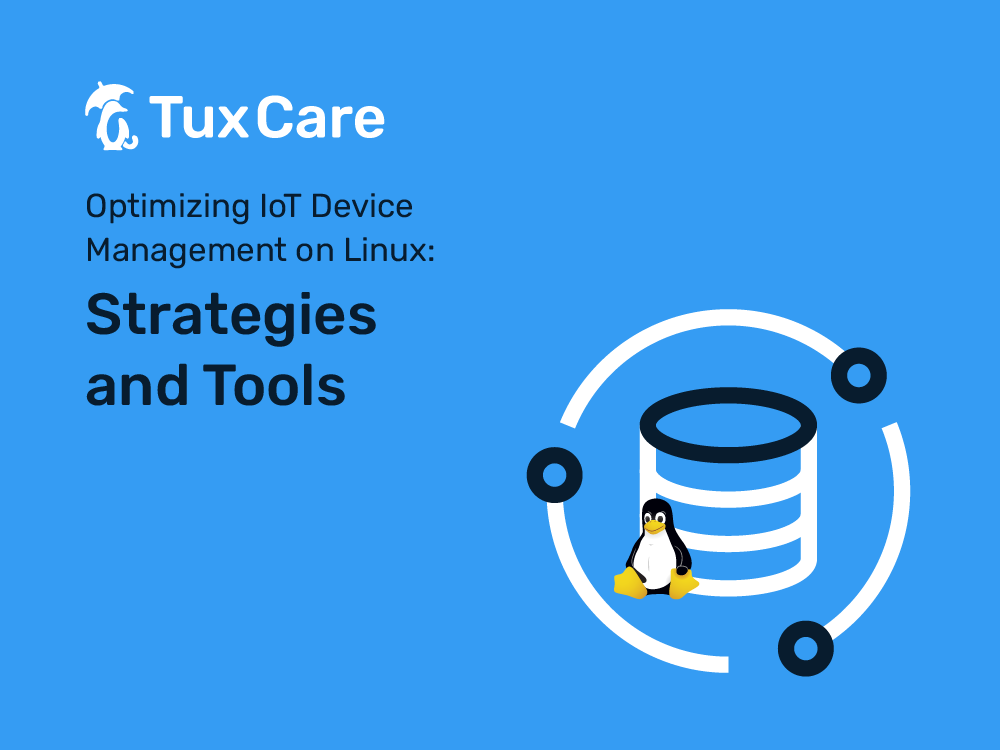Optimizing IoT Device Management in Linux: Strategies and Tools
In the vast world of the Internet of Things (IoT), Linux-based operating systems have carved out a significant space due to their robustness, flexibility, and wide range of supported hardware. But with a growing network of devices to manage, how do you ensure optimal performance and security? In this blog post, we’ll delve into optimizing IoT Device Management in Linux, highlighting effective strategies, tools, and techniques that can streamline your IoT device management process.
Embracing the Linux Advantage for IoT
With Linux, IoT device management becomes not just doable but efficient. Linux, an open-source platform, provides unparalleled customization options and security features, making it an ideal choice for IoT device management. This management includes tasks such as device provisioning, firmware updating, monitoring, and troubleshooting.
For example, the KernelCare IoT service provides live patching for IoT devices running on Linux. This tool ensures continuous security and uptime by patching kernels without rebooting, which is essential in an IoT environment where devices often operate in critical roles and remote locations – and can be difficult to take out of production just to apply a patch.
Proven Strategies for IoT Device Management
- Comprehensive Monitoring
A significant aspect of IoT device management in Linux is monitoring device activity. It is crucial to understand the device’s status, health, and connectivity. Tools like Nagios and Zabbix offer detailed reports and real-time alerts about your IoT devices.
- Regular Firmware Updates
IoT devices are susceptible to security vulnerabilities, making firmware updates critical. Over-the-air (OTA) updates help to patch these vulnerabilities, enhance device functionality, and improve the user experience. Mender.io and Balena are two great tools that provide robust OTA update frameworks for Linux-based IoT devices.
- Efficient Device Provisioning
Device provisioning involves the configuration of an IoT device to enable communication with other network devices. Tools like Puppet and Ansible are popular for automated provisioning, reducing the time and effort required to set up each IoT device.
Bridging the Gap with Linux-Based Tools
Let’s take a closer look at the specific tools mentioned and how they interact with the overall IoT infrastructure:
Nagios and Zabbix: These tools can be integrated with email and messaging platforms for real-time alerts. With plugin support, they can be adapted to monitor almost any device or application, thus providing extensive coverage of your IoT infrastructure.
Mender.io and Balena: These tools ensure secure delivery of firmware updates. They offer features like phased rollouts, rollback on failure, and update scheduling that provide control and reliability during the update process.
Puppet and Ansible: These tools can automate the deployment and management of software on your IoT devices. With a simple script, you can configure hundreds of devices at once, making them integral to large-scale IoT deployments.
Each of these tools brings a unique capability to the table, and when used in harmony, they form a cohesive IoT device management system on Linux.
Navigating IoT Device Management Challenges with Linux
Despite the plethora of strategies and tools available, IoT device management in Linux can present a unique set of challenges, primarily due to the heterogeneity of IoT devices. Yet, by understanding these challenges and leveraging Linux’s flexibility and openness, we can develop effective solutions.
For instance, Linux’s ability to be tailored to different hardware profiles can help solve compatibility issues among diverse IoT devices. The open-source nature of Linux allows developers worldwide to contribute and troubleshoot issues, fostering an ever-improving ecosystem that’s well-equipped to handle the demands of IoT.
Conclusion: Optimizing IoT Device Management on Linux
Optimizing IoT Device Management is a journey that involves careful planning, selection of the right tools, and implementation of effective strategies. By leveraging Linux’s inherent advantages and the right set of tools like KernelCare IoT, Nagios, Zabbix, Mender.io, Balena, Puppet, and Ansible, you can manage and secure your IoT devices efficiently and sustainably.
Linux presents a promising pathway for IoT device management, combining the power of a robust operating system with a suite of sophisticated tools. Whether you’re just starting your IoT journey or looking to optimize an existing infrastructure, consider this roadmap as your guide to a successful IoT implementation.
For more insights and support in your IoT journey, explore our range of services tailored for IoT device management on Linux.
Also, check out our whitepaper on non-disruptive patching for Industrial IoT devices.
External resource: Linux and IoT: The Future is Now



 Documentation
Documentation Login
Login




